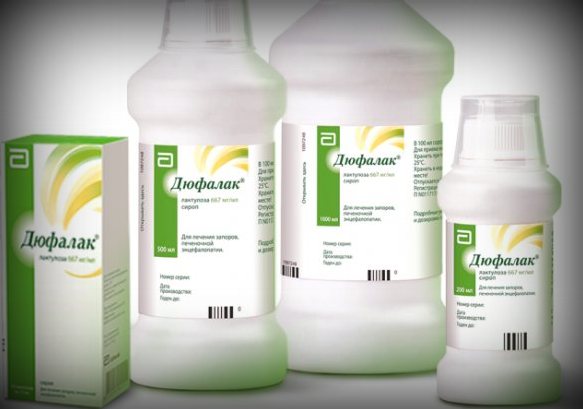A common problem that occurs in children and babies is the delayed bowel movement. In addition to being painful enough for a baby, it can also disrupt sleep patterns, affect eating habits, or cause chronic gastrointestinal problems.
To facilitate bowel movements in children and babies, there are a variety of laxatives, from traditional medicine and nutritional supplements to medications and physical therapy. Modern pharmacology offers many forms of laxatives that are convenient and designed specifically for children, for example, easily mixed with food or drink.
As with any medication, it is very important to read the instructions carefully before using the drug and follow them exactly to avoid overdose or side effects.
If constipation persists - even after using laxatives for several days, you should see your doctor.
Before deciding on the use of drugs or folk remedies, you should make sure that the problems or unusual behavior in the baby are associated with constipation. In this case, it will be useful to familiarize yourself with the features of child physiology.

Content
- 1 Important information when choosing laxatives for children
- 2 Types of laxatives for children
- 3 Rating of laxatives for children
- 4 How to choose the right laxative for your child
Important information when choosing laxatives for children
There are some obvious signs associated with having difficulty defecating in children, including straining and very hard stools. It can also be pain in the lower abdomen, colic, flatulence and increased nervousness. However, identifying constipation can be difficult. Knowledge of the characteristics of children's physiology will help to understand whether a child may suffer from constipation.
Features of physiology by age
Infants under six months of age have about two to four bowel movements per day. However, variations are possible depending on the individual characteristics of the infant and the method of feeding (they are more common when breastfeeding than when feeding with a mixture from a bottle).
At the age of six months to a year, the amount decreases to 2-3 times a day. For ages from one to three years, the norm is to empty the intestines 1-2 times a day. For ages over three years old, the interval can vary from once every two days to twice a day.
Do you need laxatives or the problem will be solved by itself
Laxatives are not always necessary. Constipation can often be relieved by changes in diet, regimen, and physical therapy (massage, exercise). If you are unsure if laxatives are the appropriate solution, you should talk to your pediatrician.
Constipation is not necessarily a sign of a serious illness. It can be associated with both dietary changes and lifestyle or individual characteristics.This disorder is incredibly common in both children and adults.
However, if it lasts more than a few days or does not relieve with the use of a laxative, you should consult your doctor.
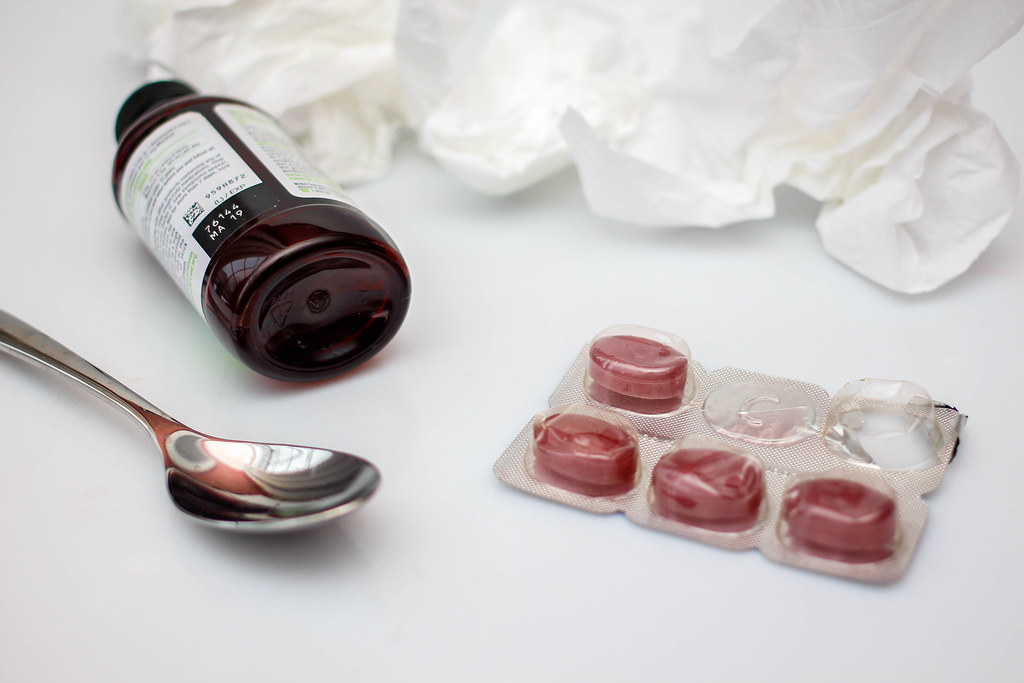
Types of laxatives for children
According to the form of administration, laxatives are divided into oral agents and rectal drugs. Oral (oral) products are available in the form of tablets, capsules, or liquid (suspension, drops). They are not a fast-acting remedy (the time for which the effect is achieved is from 6 to 10 hours). The benefits of this type are easily taken internally.
Rectal laxatives are injected directly into the rectum and are designed to quickly relieve constipation. This type of remedy includes enemas and suppositories (suppositories). It should be mentioned that enemas are generally not suitable for children under two years of age.
The drugs, depending on the form in which they are sold, are suitable for children of different ages:
- drops (the best choice for babies from 3 to 12 months);
- microclysters - from 2 years old (but some can be used already at the age of 1 month);
- suppositories or suppositories for influencing the rectum are used in infants older than three months;
- syrups are intended for use from the age of two;
- powders for dissolution in liquids are approved for use from 3 years old;
- tablets are given to those who are 6 or more years old;
- capsules are suitable for children over 10 years old.
Distinguish between drugs and depending on the effect on the human body:
- probiotics that restore the intestinal microflora and help to establish its work (Linex, Forlax, Bifidumbacterin, Difolax), have a minimum of contraindications, can be prescribed for a long time;
- drugs that stimulate movement in the intestine due to irritation of its walls (Bisacodyl, Dulcolax, Guttalax) have contraindications, can cause lazy bowel syndrome;
- intestinal bulking fillers usually contain plant fiber (Fibralax);
- means that accumulate a liquid in the intestine that softens its contents (Mikrolax);
- lubricants are oils (castor, linseed, petroleum jelly) that facilitate bowel cleansing.
What you need to pay attention to
When choosing laxatives, one should be guided by a number of criteria that allow not only to solve a delicate problem, but also to avoid negative consequences. That is, a child's laxative should be:
- easy to use;
- acting gently, without unpleasant painful effects;
- appropriate age norms in form and dosage;
- contributing to the restoration of intestinal flora or the most neutral effect on it;
- non-addictive or lazy bowel syndrome;
- containing natural ingredients;
- with no or minimal side effects.

Rating of laxatives for children
The most common and popular form of laxatives can be called syrups, less common are powders for dissolution, drops, and then tablets and capsules, suppositories and microclysters follow.
Laxative syrups
Parents like the form of the syrup because children do not perceive drugs in this form as something unpleasant, and they are easy to take (if necessary, with food or drink).
Duphalac
- soft and easy to use.
Duphalac is a laxative for children in the form of a syrup based on the action of lactulose. This is the mildest active ingredient, drugs on the basis of which can be given almost from birth. Children are prescribed a dosage of 2.5 ml - 5 ml per day, depending on age and weight.
Benefits:
- suitable for the smallest;
- safe, has a mild effect;
- available.
Disadvantages:
- the price is above average.
Helping
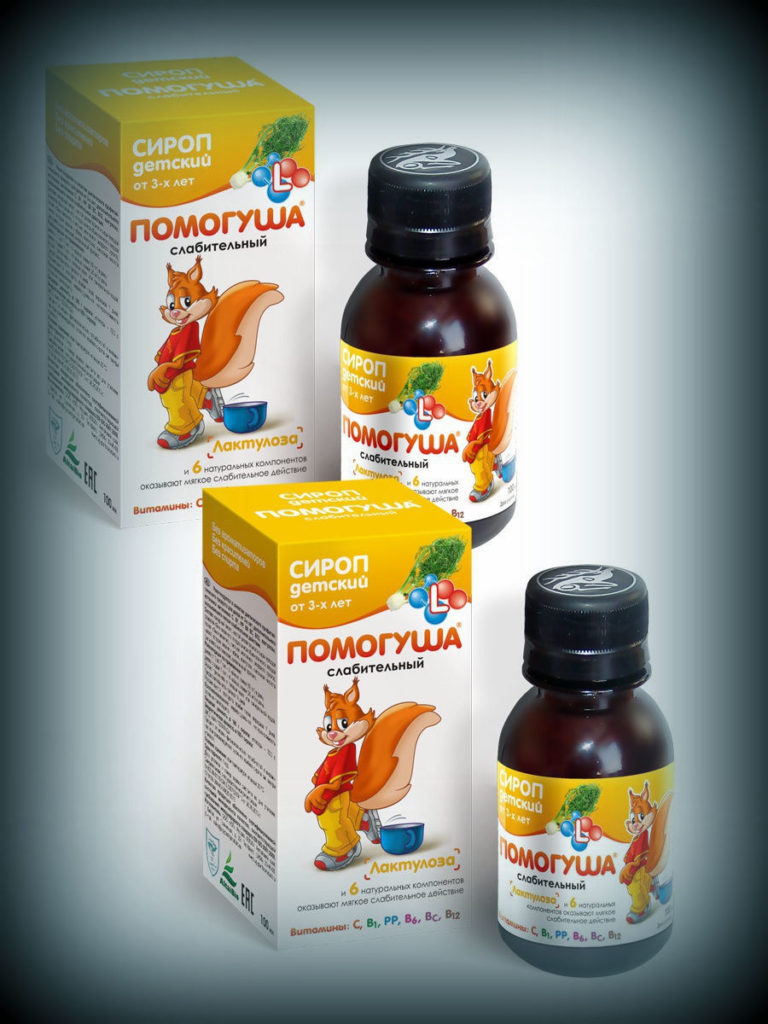
- herbal preparation.
The drug "Pomogusha" produced in the form of a syrup has natural ingredients.It is a herbal infusion (fennel, anise, cumin) and the familiar lactulose.
The syrup is suitable for children over 3 years of age, it acts gently. "Pomogusha" also includes vitamins of group B and C, with a general strengthening effect.
Benefits:
- natural ingredients;
- pleasant to the taste;
- low price.
Disadvantages:
- there are age restrictions.
Normolact
-suitable for long-term use.
The drug also contains lactulose as the main active ingredient. Due to the mild effect on the intestines, the drug can be prescribed for long-term use. It is a budget analogue of Duphalac.
Benefits:
- soft impact;
- not addictive;
- low price.
Disadvantages:
- has side effects (flatulence);
- has contraindications.
Powders for preparing solutions
The form of the sachet is convenient to take on the road, besides, manufacturers specially develop preparations with a pleasant taste.
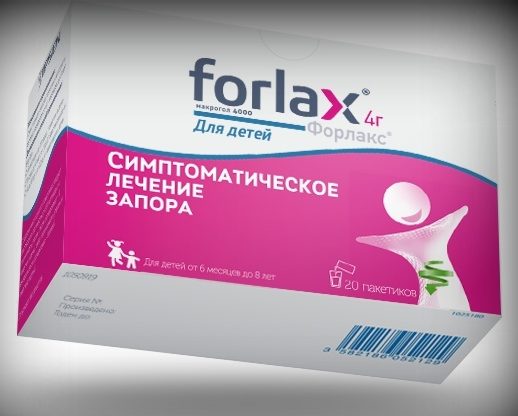
Forlax
- the most popular.
Forlax is available in several forms - sachets with powder for solution preparation and tablets. For children from 6 months to 8 years old, use powder. The solution has a pleasant taste, reminiscent of orange juice.
The drug quickly but gently stimulates the large intestine and eliminates even prolonged constipation in just 1-2 doses. The drug is taken once a day, with different dosages (depending on age).
It is better to take the drug in the morning. The remedy is prescribed for chronic constipation for up to 2-3 months.
Benefits:
- pleasant taste:
- impact effectiveness;
- there is no addiction.
Disadvantages:
- relatively high price.
Tranzipeg
- with apple and lemon flavor.
"Tranzipeg" is another medicine in the form of a powder with the main active ingredient macrogol. Suitable for ages over 1 year old. The diluted preparation tastes like lemon or apple, which babies usually like.
Benefits:
- the drug is excreted from the body unchanged (not absorbed in the intestine);
- does not irritate mucous membranes.
Disadvantages:
- the effect of the application is not achieved immediately (after 1-2 days).
Phytomucil
- restores microflora.
This natural remedy not only gently cleanses the intestines, but also helps restore microflora. Available in powder form, which can be mixed with juice or porridge.
Benefits:
- helps to restore the natural intestinal microflora.
Disadvantages:
- has an age limit (from 3 years old);
- average price.
Fibrolax
- cleans naturally.
Fibrolax is a suspension powder with a laxative effect due to the psyllium seed shell. The coarse fiber contained in the preparation not only cleanses the intestines, but also has an additional effect - it removes excess cholesterol.
Some doctors attribute Fibrolax to biological supplements. This supplement can be taken from 3 years old.
Benefits:
- effective;
- made on the basis of natural ingredients;
- not addictive;
- low price.
Disadvantages:
- the effect is achieved over a long time;
- has an age limit.
Drops to eliminate constipation
In this form, laxative drugs have recently been produced less often, but they are quite convenient to use (they can be dissolved in a drink or added to food).
Guttalax
- guaranteed result.
For children, this drug is recommended from 1 month. Laxative drops specially developed for children are a synthetic preparation containing triarylmethane.
The action of the substance extends only to the rectum. The recommended dosage starts from 1 drop for newborns and should not exceed 10 drops for the oldest.
Benefits:
- time-tested efficiency;
- convenient form of packaging with a dispenser.
Disadvantages:
- not suitable for frequent use;
- has side effects;
- not suitable for long-term use.
Pills and capsules
Medicines and dietary supplements produced in the form of tablets are recommended for use from the age of 6 years, due to the peculiarities of patients (it is difficult to persuade them to swallow a tablet). The capsules are usually even larger. Therefore, they are recommended for admission from the age of 10.
Laxatin
- a preparation with herbal ingredients.
Laxatin tablets gently stimulate colon motility and relieve long-term constipation in one or two uses.
It is of vegetable origin. Popular for travel first aid kit.
Benefits:
- easy to use;
- low price;
Disadvantages:
- long period of action;
- addictive.

Castor oil
In the form of capsules, you can buy a well-known remedy in the pharmacy - castor oil. Castor oil has a pronounced laxative effect.
Benefits:
- efficiently;
- has no age restrictions;
- low price.
Disadvantages:
- the dosage must be carefully observed so that there are no side effects;
- can not be used for a long time.
Suppositories
Medicines in the form of rectal suppositories can be used to relieve the condition of the smallest patients.
Glycerol
- suitable for very young children.
Glycerol - candles containing glycerin are suitable for single use. It is a fast acting laxative, the effective substance of which is glycerin.
Sold in the form of candles that can be used for newborns.
Benefits:
- acts quickly and efficiently;
- has no age restrictions;
- convenient to use.
Disadvantages:
- causes a lazy bowel effect;
- rarely occurs.
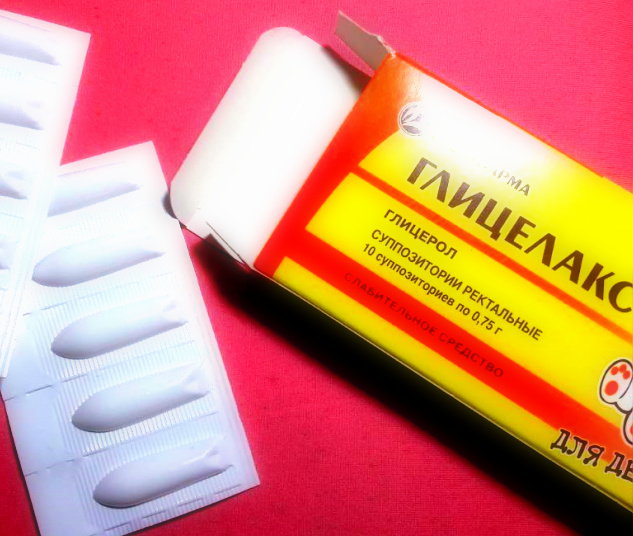
Glycelax
- a budget option.
Glycelax is an analogue of Glycerol with a lower price. This remedy acts on the intestines gently, but it is recommended for single use. It can be used to treat babies from 3 months.
Benefits:
- low price;
- soft impact.
Disadvantages:
- has contraindications:
- not from natural ingredients.
Microclysters
A safer way to cleanse the intestines is with microclysters. These medicines are produced in the form of tubes with a tip that facilitates the entry of the active substance directly into the rectum. The duration of the product is from 10 minutes.
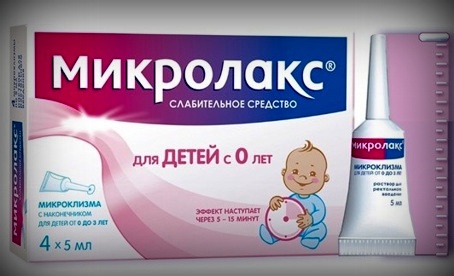
Microlax
Is a popular fast-acting remedy.
Mikrolax is an effective, easy-to-use drug. The main effect is sodium citrate, which stimulates the flow of water into the intestines.
Benefits:
- speed of impact;
- ease of use;
- convenient form for admission.
Disadvantages:
- expensive tool;
- long-term use is not recommended.
Proctum
- a budget option.
Domestic budget analogue of Mikrolax, which costs almost 2 times cheaper. However, there is an age restriction: it is recommended to use it from 2 years old.
Benefits:
- contains components that allow to heal microcracks;
- helps to restore its own microflora;
- low price.
Disadvantages:
- there are difficulties with the acquisition;
- age restrictions.
Products based on natural oils
Means based on natural oils have been used in folk medicine for a laxative effect (including in children) for a long time. Natural oils are a good alternative to chemical-based preparations.
Linseed oil
Flax seed oil is a natural laxative. This product has no restrictions for children (the main thing is to know the correct dosage).
Benefits:
- has no side effects;
- made from plant components.
Disadvantages:
- relatively high price.
Vaseline oil
Vaseline oil - obtained in the process of refining highly refined petroleum products. This oil has also been used for a long time to combat constipation. Suitable for the treatment of constipation in children from 2 years of age.
Its components are poorly absorbed into the intestines and do not affect the microflora. It can be used in several forms - be as part of an enema or simply drunk from a small spoon.
Benefits:
- mild effect on the body;
- low price.
Disadvantages:
- a chemical that has a side effect;
- suitable for single use;
- can cause a lazy bowel effect.
In addition to the above oils, olive and sunflower oils have a laxative effect. They must be taken orally before meals (dosage - from 1 teaspoon).
How to choose the right laxative for your child
In order not to be mistaken with the choice of a laxative for a child, it is necessary to pay attention to a number of features.
- Check if the drug is exactly intended for use by a child of a certain age.
- Try to avoid drugs that negatively affect the intestinal flora.
- Choose products with natural ingredients.
- To clearly understand the need for a quick effect or long-term treatment is needed.
- If the drug does not have the desired effect, then you should consult a pediatrician.

